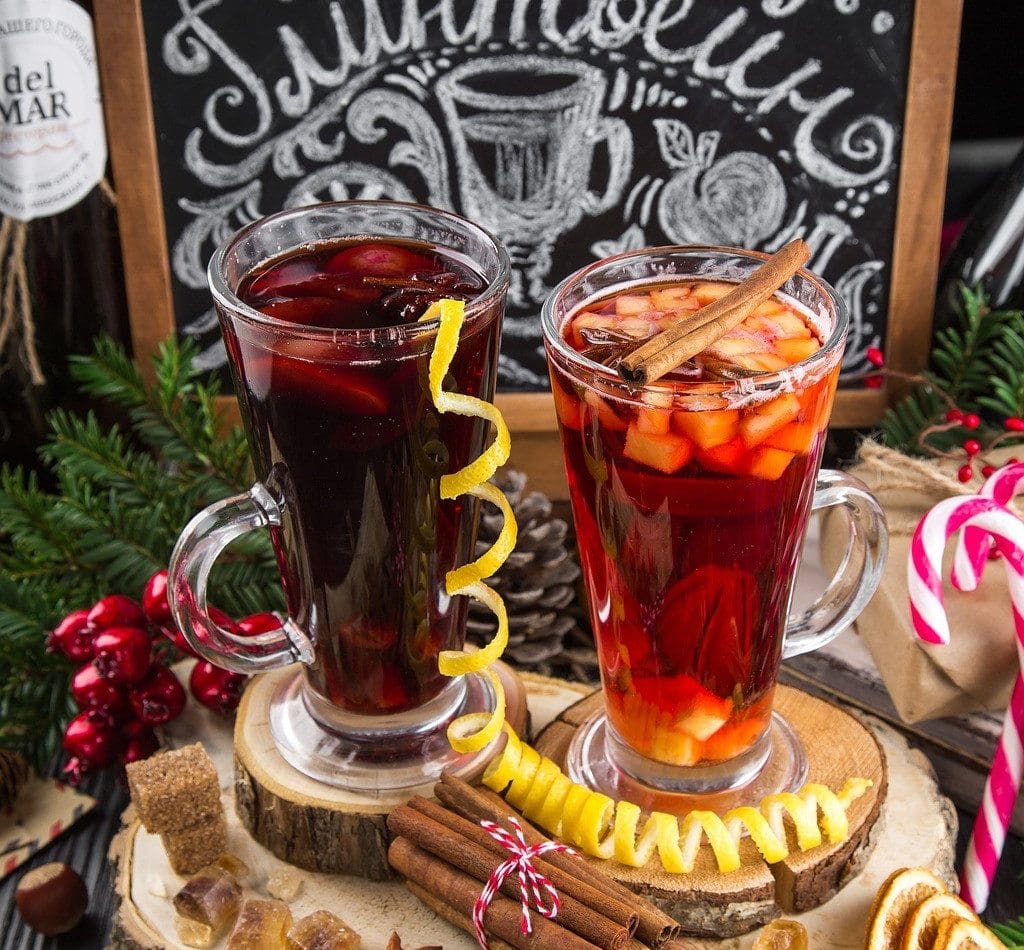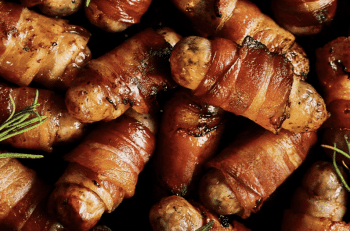It’s a sign for many of us that Christmas is coming, when the first bottles of mulled wine appear on the supermarket shelves in late October – and in lovely Christmas market cabins!
Devotees will relish the spicy and sweet taste and aroma throughout winter, these are the people with cupboards full of whole spices, chunky mugs stained a deep red and an eye on the booze aisle for the lightly oaked, medium bodied, fruity red wines that are perfect for mulling.
What’s not to like? Here, we take a closer look at mulled wine – what is it and why do we love it at Christmas?
What is mulled wine?
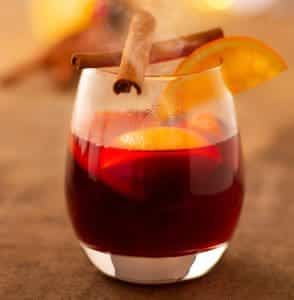
Mulled wine can be bought in most supermarkets throughout the festive season and can cost as little as £1 a bottle. It is also a lovely drink to sip as you shop for gifts at a Christmas market, the nip of alcohol will ease the stress of the crowds and it will keep you warm if the temperature drops.
And talking about temperature, did you know that once the wine starts to boil, you start to lose the alcohol content? That’s one reason why you should only simmer mulled wine for a short time – a lengthy simmer risks losing the fruity aroma and making the final taste a tad bitter.
For lovers of Christmas, the smell of cinnamon, the feel of warm wine while perusing a snowy Christmas market and the taste of sweet spices sum up the joys of the festive season. Mulled wine is rarely enjoyed at any time other than December, so it is a quintessentially Christmas drink.
oooOooo
How to make mulled wine
Here’s chef J Rivera who works for the perennial Christmas.co.uk favourite Jamie Oliver with a recipe on how to make the wine.
This is a great choice for anyone throwing a Christmas party and has a surprising twist! (Spoiler alert: It’s rum…).
The video offers a step-by-step method of creating something that house guests will love – or for you to enjoy after a busy shopping or wrapping presents.
He uses sugar, orange plus the zest, lime and cinnamon sticks.
Spices and grated nutmeg are added and half a bottle of red wine.
The concoction is simmered until the sugar dissolved and then brought to a boil – and left until it becomes syrup.
More red wine is added and then simmered and then the twist of spiced rum is added.
We really enjoyed the finished creation!
oooOooo
What does ‘mulled’ in mulled wine mean?
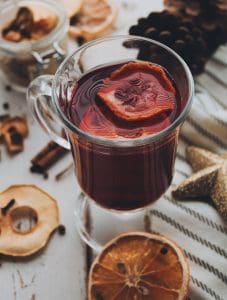
Search the internet and you’ll find hundreds of recipes for mulled wine. Choose from sharp citrus, super sweet and spicy to the point of bitterness. The ‘correct’ combination and proportion of spices is vital, but every country has their own version and connoisseurs of this jewel-coloured tipple will love one and despise the other.
If you are looking for a classic mulled wine recipe to impress, try this fragrant recipe from the BBC Good Food website.
A simple mulled wine recipe
Serves six
Ingredients:
- 750ml of red wine
- 1 star anise
- 1 clementine, sliced
- 3 dried figs
- 1 cinnamon stick
- 3 black peppercorns
- 4 cloves
- 50ml of brandy
Method:
- In a large saucepan, pour in the wine
- Add the star anise, sliced clementine, dried figs, cinnamon stick, black peppercorns and cloves
- Gently heat until the mixture is simmering, then turn off the heat
- Use a spoon to remove the peppercorns and spices from the mixture
- Stir in the brandy
- Serve by pouring the mulled wine into mugs or heatproof glasses
- You can add a slice of clementine to the glass or mug
- Enjoy your delicious homemade mulled wine!
What’s the difference between mulled and red wine?
Red wine is one of the most popular mulled drinks. For the best tasting mulled wine, choose a fruity, unoaked wine with a medium body. If you choose the wrong wine, the spices will be lost, and it can taste tannic and astringent.
The difference between red wine and mulled wine is the addition of heat and warming spices such as cloves, cardamom and cinnamon. There’s no need to spend lots of money on a red wine you’re planning to transform a warming, comforting drink packed with festive flavours and aromas. A budget wine or mid-range on offer will do.
Christmas.co.uk Top Tip: Look for Chilean Merlots as they make a super tasty, mulled wine.
Why do we drink it?
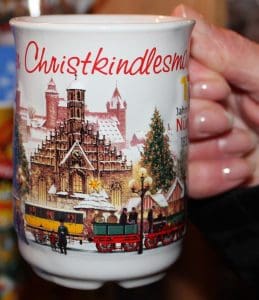
The Roman Empire was heavily influenced by Greek culture, so most of the population would drink mulled wine during the colder months to ward off chills and infection.
In medieval times mulled wine continued to be a healing drink. Especially in northern Sweden where in winter, the sun is barely seen, and the cold is pervasive. The rest of the Nordic countries also adopted Glogg, a mix of red wine, sugar, orange and herbs.
The wine’s popularity during the coldest months of the year meant it became associated with winter festivals and eventually Christmas. The delicious aroma of spices, cheeky hit of booze at a chaotic time and the tastebud tingling flavour mean that mulled wine continues to be a favourite at festive gatherings.
oooOooo
Food for Thought: The Festive History
If you want to know more about the history of mulled wine and why it is a popular drink at Christmas, this video from Shipt is for you.
It starts by asking why Santa wants milk with his cookies and explains that mulled wine would be a better choice – though we think Santa might struggle to finish his present delivering duties if that was the case!
The American video does a good job of explaining the history and explains why certain spices are used.
The presenter also highlights that Charles Dickens helped to promote mulled win.
He then puts together a great recipe for mulled wine.
oooOooo
Why is mulled wine a festive drink?
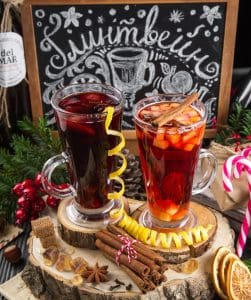
The ancient Greeks started the tradition and passed it on to the Roman Empire. During the dark days of medieval England and in the freezing Nordic countries people all warmed fortifying red wine and added health-giving herbs and spices.
Before central heating and insulation, winter was a challenging time for many. Winter festivals were important moments of light and cheer during dark days for hundreds of years before our modern-day Christmas became popular.
At times when prolonged exposure to cold was frequently deadly, sharing hot food and drink that contained health boosting herbs and spices with your family and neighbours was an excellent way to celebrate.
A citrus-flavoured wine called Glogg, has long been a traditional festive drink in Nordic countries and, since Christmas as we now know it also came from that part of Europe, it makes sense that the UK and US developed our own, sweeter version of mulled wine.
The Victorians imported lots of oranges and lemons from Spain so citrus fruits weren’t unusual – which is when British drinkers used the fruit – though the ancient Greeks had a similar drink using citrus fruits. Until then, we used what was at hand and in 1596, a famous recipe for mulled wine was published by Thomas Dawson called The Good Housewife’s Jewel. In it, the recipe includes white wine, ginger, cinnamon, pepper, mace, cloves and lots of sugar.
And, in case you are wondering, there is a difference between punch and mulled wine – it is the use of red wine in the latter. Any alcoholic drink can be used in punch, but mulled wine definitely needs red wine! Punch may use fruit juice, however.
oooOooo
Charles Dickens’ Christmas Punch – How to Drink Smoking Bishop
Having mentioned Charles Dickens, here’s a recipe for Smoking Bishop which he mentions in A Christmas Carol.
Put together here by the How to Drink team, this is an easy recipe that offers a different take on mulled wine recipes.
Essentially, it involves using four oranges that have been studded with cloves and then baked in an oven.
The recipe calls for a quality red wine and ruby port.
The presenter uses ginger, nutmeg and all spice and brown sugar before adding the juice from the baked oranges.
It is straightforward and smells great when finished!
oooOooo
Why do we drink warm mulled wine?
Why? Because the spices in the wine, cinnamon, cloves, nutmeg, vanilla pods, ginger, cardamom, allspice, star anise, bay leaves and black pepper plus clementines, all taste and smell exceptional when they are warmed.
Also, you mull wine by combining whole aromatic spices with heat and time. So, it seems silly to drink this tasty concoction cold.
Before it was a Christmas drink, consumed in paper cups at school fayres and sipped from mugs clasped by mittened hands, the wine was a way to ward off chest infections in the colder parts of the Roman Empire.
Mulled wine is hot because it is a winter drink. When do we enjoy having our lips turned ruby by a cinnamon-laced beverage the most? Outside, in cold weather or when we’re snuggling up against the cold under a blanket.
oooOooo
Gordon Ramsay’s Mulled wine with dry roasted spiced nuts
Let’s finish with this great idea from Gordon Ramsay for mulled wine with dry roasted spiced nuts.
Yes, nuts. In mulled wine.
He starts by simmering the red wine and puts the spices together, along with cinnamon sticks.
He also uses lemongrass to add an Asian spin.
This is also put into a muslin cloth – or a J cloth! – and added to the wine.
He also adds oranges, brown sugar and stem ginger – to create a ‘kick’!
Gordon then creates the spiced nuts – using a variety of nuts. He uses almonds, cashews, brazils and hazelnuts and pistachios in a pan. They are slowly toasted to release the oils, he adds salt and add cayenne pepper and paprika. Soon the nuts absorb the flavour and when the nuts are coated, they are done.
All the while the mulled wine is still simmering and with the addition of the nuts you have created an impressive festive drink.
It doesn’t sound like it should work – but it does!

